SEO copywriting tools are writing techniques that keep readers on the page for longer.
More ‘time on page’ means better SEO because it tells Google that your content answered the searcher’s query.
In this article you’ll discover 7 copywriting techniques for better SEO:
- how to write catchy headlines
- how to write compelling Intros
- using transitions
- user-friendly formatting
- writing around long tail keywords
- persuasive meta descriptions
- getting the right word count
But first, what is SEO copywriting?
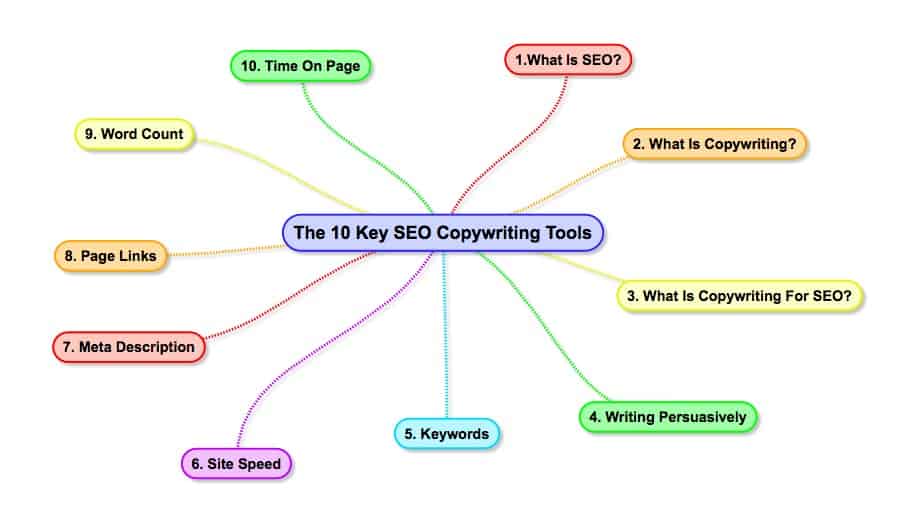
What is SEO?
Search engines rank web pages based on two main factors:
- relevance of the page to the search query of the searcher
- authority of the page, measured in terms of the number of links pointing to that page, and the trustworthiness of those links.
SEO is the practice of optimizing your content so that it:
- Matches the searcher intent of a particular search query
- Attracts links and social media shares that increase the page’s authority.
What Is Copywriting?
In a nutshell, copywriting is getting people to act.
Keeping your reader on the page
It’s the art of writing so persuasively that the reader stays with you till the end of your article or letter and then follows your call to action (by purchasing a product, subscribing to a list etc).
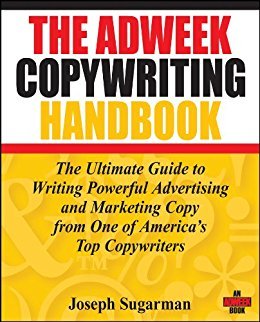
Put simply, SEO copywriting is writing content that’s optimized for search engines but at the same time will engage readers.
You might think that those two goals are pulling in different directions.
But that’s not the case:
Persuasive writing is an SEO factor
The more persuasive and engaging your writing, the more time your visitors will spend on your page. And the more time people spend on your page, the higher Google will rank you in the search results.
If your writing and the information you’re sharing are exceptionally good, your readers will share it on social media. Those shares will act like backlinks.
They’ll increase your authority, as measured by the Google algorithm. And that, in turn, will give your page a higher ranking in the search results.
So persuasive writing has a direct impact on SEO.
The 7 SEO Copywriting Tools:
Here are the key SEO copywriting tools that will help get your blog post on Page#1 of the search engine results:
#1. Write Catchy Headlines
Did you know that 80% of readers never make it past the headline?
That’s right – only 2 out of 10 readers reach the first paragraph.
And that’s why writing catchy titles is a must!
Writing attention-grabbing headlines is a whole topic in itself. The best resource I know of is Jon Morrow’s Headline Hacks.
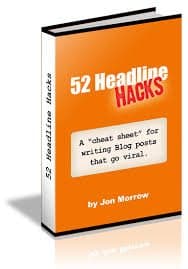
Once you’ve come up with a good headline, run it through Co-Schedule’s Headline Analyzer.
#2. Write Compelling Introductions
Next you need a compelling Introduction – this is one of the key SEO copywriting tools!
There are two basic kinds of Introduction and nearly all successful bloggers use one or the other. For more on this, see my blog post The Definitive Guide on How to Write a Compelling Intro for Your Next Blog Post.
A compelling Intro is a good start but it’s not enough.
You can still lose your reader half way down the page.
#3. Use Transitions
The secret to keeping readers on your page all the way to the end is transitions. They’re also known as ‘grease-slide phrase’s or ‘bucket brigades’.
In the days before fire brigades, neighbours would fight fires by forming human chains. They’d pass buckets of water along the chain. The idea was to move the buckets along the chain so that there was no break in the supply of water.
It’s the same with transitions or bucket brigade phrases. You can use them to literally move your reader down the page.
Again, it’s a whole topic on its own. Here’s a great article about it with a list of 502 bucket brigade phrases.
#4. Use Good Formatting
Good formatting will also increase the time people spend on your page. Pay particular attention to length of sentence and length of paragraph.
You can get great tips on formatting from reading the guest post guidelines of major blogs.
This is what Ninja Outreach says about sentences and paragraphs:
- No sentence should contain more than 20 words
- A paragraph should contain no more than 200 words
Here’s another formatting tip that will hugely improve the readability of your article:
Whenever you can, use bullet points. They break up the monotony of the paragraph structure and invite the reader to keep reading.
#5. Use Long Tail Keywords
This is the most important of all SEO copywriting tools.
But what are long tail keywords?
Let’s start by explaining ‘head’ keywords:
Head keywords
Any keyword that contains one or two words is a ‘head’ keyword. Examples are:
- Internet marketing
- Car loans
- Weight loss
Head keywords typically have a high search volume and are very competitive.
I’m going to be brutally honest with you.
You have almost no chance of ranking on Page #1 of Google for any ‘head’ keyword unless you have a domain authority of at least 45.
Unless you’re a major brand with very high domain authority, the only keywords you should be targeting are ‘long tail keywords’.
Long Tail Keywords
These are keywords containing at least 4 words. They have a much smaller monthly search volume than ‘head’ keywords and so the big players leave them alone.
Which is why you have a good chance of ranking for them on Page #1.
Although the search volume on individual long tail keywords is far less than it is for head keywords, about 80% of all searches are for long tail keywords, as the people at Moz show in this graph:
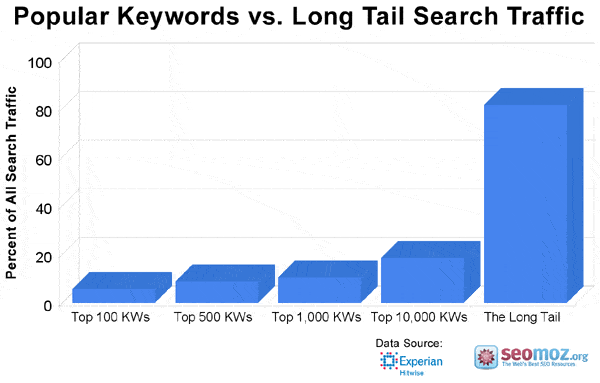
The metrics of long tail keywords
Good long tail keywords should have a minimum monthly search volume of 50 and when you type them into Google there should be no more than 500,000 results.Enter your text here…
Write blog posts around long tail keywords
Each blog post you write should target a long tail keyword. Make sure the long tail keyword appears in the:
- title of your page or post
- meta description
- ‘slug’ of the page URL
Your long tail keyword should also appear in at least one:
- H2 sub-heading
- Image ‘alt attribute’
In addition, your long tail keyword should be scattered throughout the article or post.
To make sure you’ve optimized your page or post for keywords, install the free version of the Yoast SEO plugin and follow the prompts until your page or post gets the ‘green light’ from Yoast.
#6. Write Persuasive Meta Descriptions
The meta description is the text beneath the page title that you see in the search results:
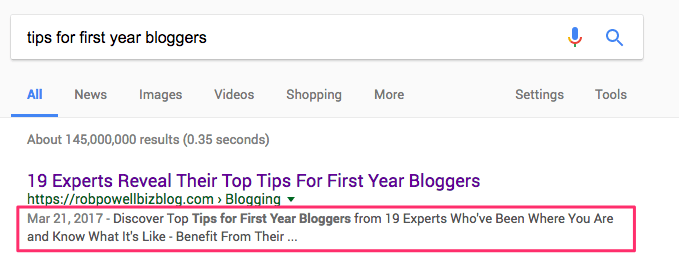
If you have the free SEO Yoast plugin installed, just go to the bottom of your page or post in ‘Edit’ mode and click on the ‘Edit Snippet’ button.
You’ll then see the meta description field where you can edit your meta description.
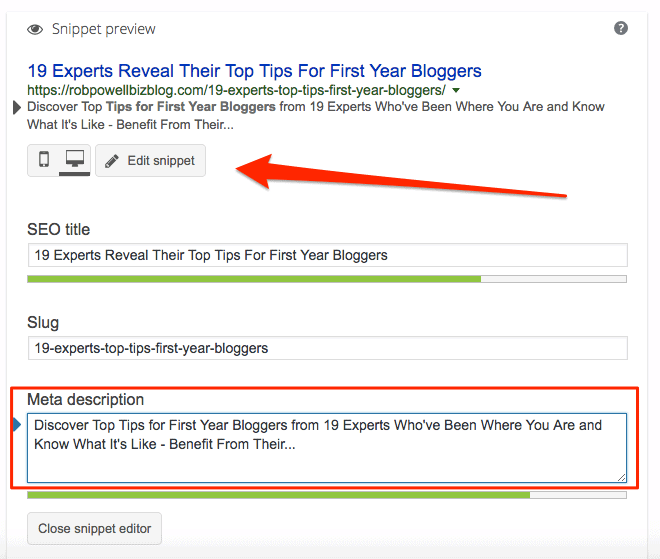
If you leave the meta description blank Google will just pull in some random text from your page and it won’t be the most compelling message.
The meta description is the one chance you have to persuade searchers to click on your page, so this is a huge SEO factor.
Use your keyword in the meta description, preferably near the beginning and use plenty of power words that motivate people and excite interest.
Google will cut off your description at 160 characters with an ellipsis (…). Having your description cut off at 160 characters won’t always give you the best result. Instead, you can truncate your description at the point of your choosing by simply adding an ellipsis (as I have done in the above example).
#7. Write Longer Content
Long-form content ranks better in the search results.
The reason for this is partly that it takes longer to read. So long-form content keeps your reader on the page for longer. And that increases ‘time on page’, which is a key ranking factor.
Snap Agency has shown that 2,500 words is the ideal article length for maximum SEO benefit:
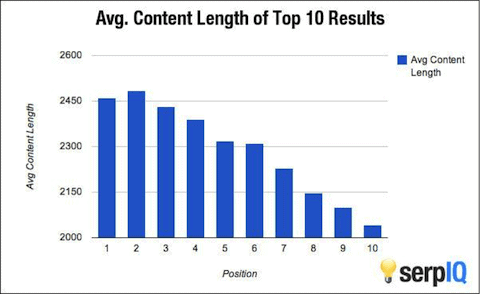
They cite studies showing that the articles occupying the top 2 positions in the search engine results have an average word count of 2,500 words.
The same goes for social shares – content that is 2,500 words in length gets many more social shares than shorter content:
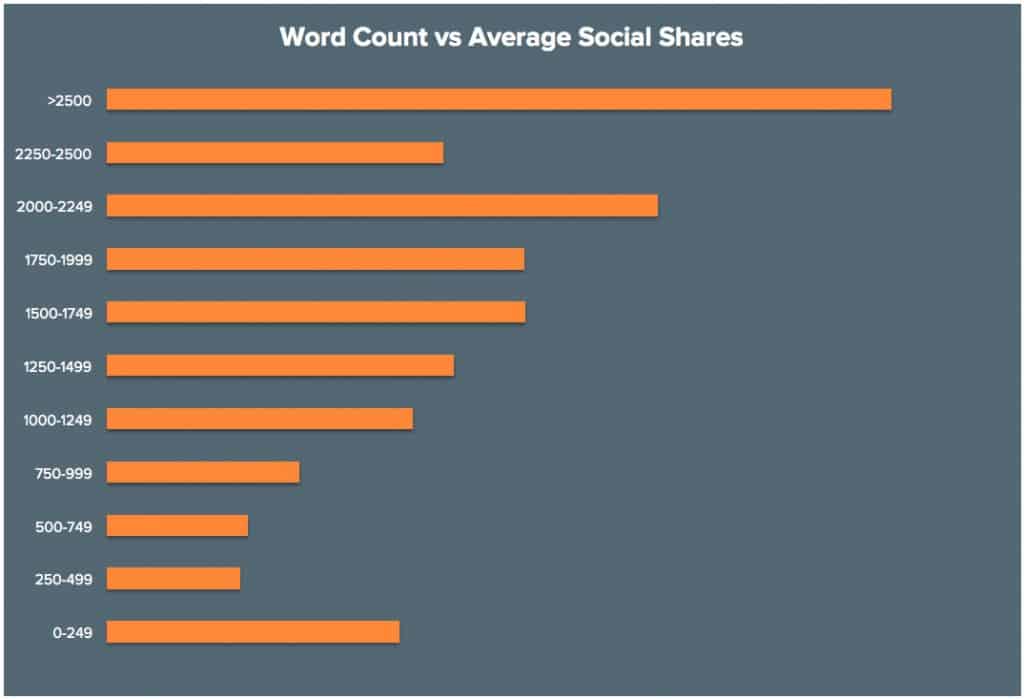
Conclusion
SEO copywriting is about writing in a way that appeals to both humans and search engines.
Use these 7 SEO copywriting tools in your next blog post and you’ll get better reader engagement and higher rankings in the search results.
More Articles About Writing
- Best Blog Post Format – 19 Tips for Formatting Online Content
- How To Structure a Blog Post – 13 Elements You Need
- How to Write Your First Blog Post – 17 Tips For Best Results
- How To Write Blog Posts: 10 Best Tips For Ranking on Google
- 21 Great Ideas For Your Next Blog Post
- How To Use Inverted Pyramid Writing for the Web
- How To Write Powerful Titles For Your Blog Posts – The Complete Guide
- How To Write a Blog Intro (The 4-Step Formula That Pulls Readers In)
- Catchy Titles for Articles – 21 Formulas That Work Like Magic
Hi Rob,
This is an amazing tip. I have been following almost every single thing you mentioned here. And as a result, my effort keeps producing result. I just wish I can have more time to guest post on other blogs. I think that’s one strategy I have not fully maximized from all my strategies.
Thanks for sharing. I love reading your post.
Emmanuel
Hi Emmanuel, really glad you’ve been getting results from these techniques. Keep going! Best regards, Rob.
This is amazing SEO copywriting tools list, I like this much, thanks so much ROB.
Hi Murli,
Thanks for your comment. I’m glad it was helpful.
All the best,
Rob.
Thanks, ROB for providing valuable material, keep it up
Thanks for your feedback Musaib, I’m glad it was useful. Best regards, Rob.
What about using formulas to write text? Heard still use such formulas as AIDA and ODC and others. What do you advise?
Hi Daniil,
Thanks for your question.
In my article, I was focusing on ‘SEO copywriting’ rather than traditional copywriting. In other words, I focused on writing techniques that optimize the various SEO elements of a web page.
But you’re quite right: traditional copywriting revolves around various formulas that I didn’t touch upon in my article.
One of these formulas is AIDA, as you mention.
AIDA is a copywriting technique that focuses on these 4 stages in converting a customer:
1) Attention – creating brand awareness
2) Interest – holding your prospects’ attention by creating interest
3) Desire – creating desire in your prospect by showing them how your product can solve their problems.
4) Action – persuading your prospects to take immediate action by creating a sense of urgency
Another copywriting formula is ODC, which is used for audiences that have already passed the awareness and interest stages.
This formula is used for a qualified target audience:
1) Offer – explain the offer
2) Deadline – create urgency with a deadline
3) Call to Action – include a strong CTA
I hope this answers your question.
All the best,
Rob.
Thanks for this! Just started my own blog, and am going to try my hardest to make it as successful as possible
Thanks, Haider. Wishing you the best with your blog! – Rob.